Shipping Horses from the Port of Newcastle
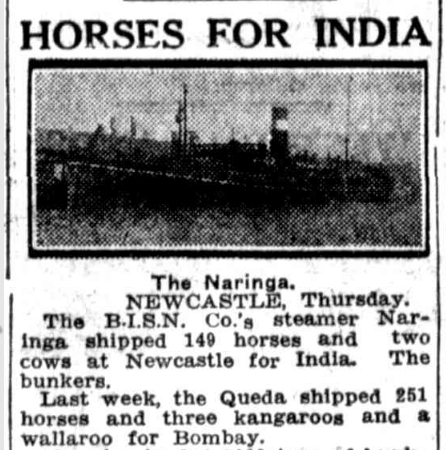
From Waler Data Base @ FaceBook. Image: Labor Daily (Sydney newspaper) 7th October 1932
A bit of history of horses shipped from the port of Newcastle, NSW. Coal was found early near Newcastle – the first ship load left there in 1799 for India.
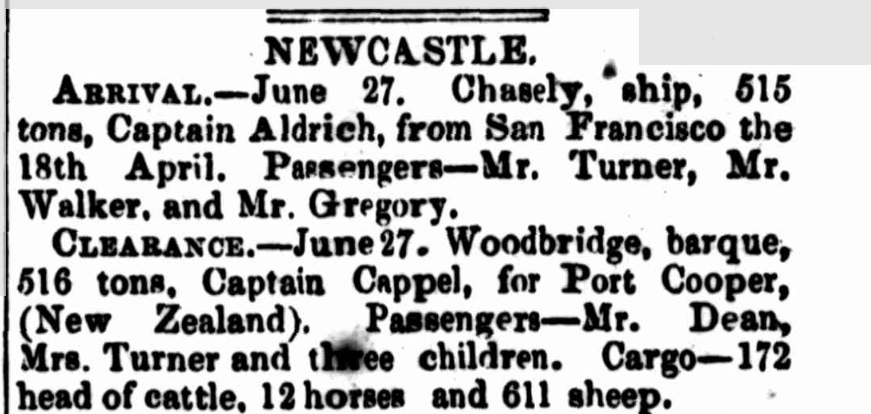
Ships were transitioning from sail to steamers in the era of the horse trade. Steamers called there to coal themselves; many – including sail ships – also took it as cargo.
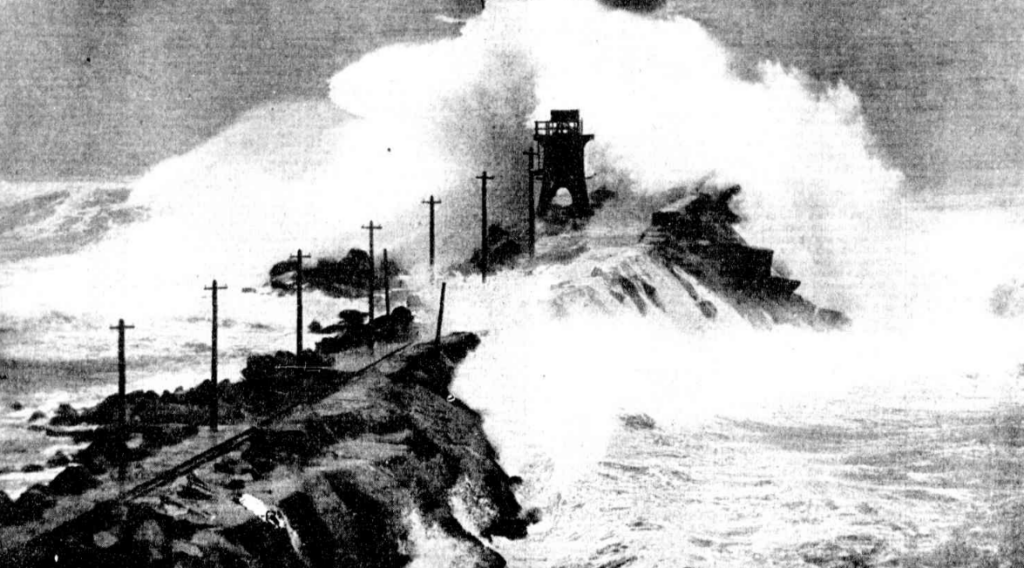
Newcastle Morning Herald and Miners’ Advocate, 19th June 1935
Big seas break over the northern breakwater. At times steamers were also lost near the entrance to Newcastle; some after leaving meeting giant seas. Those coming in often waited out at sea for the weather and seas to settle. Lives were lost over the years but these wrecks were few and far between. Most wrecks were off the northern beach where people went out on horses to look for survivors and to gather things washed up on shore.
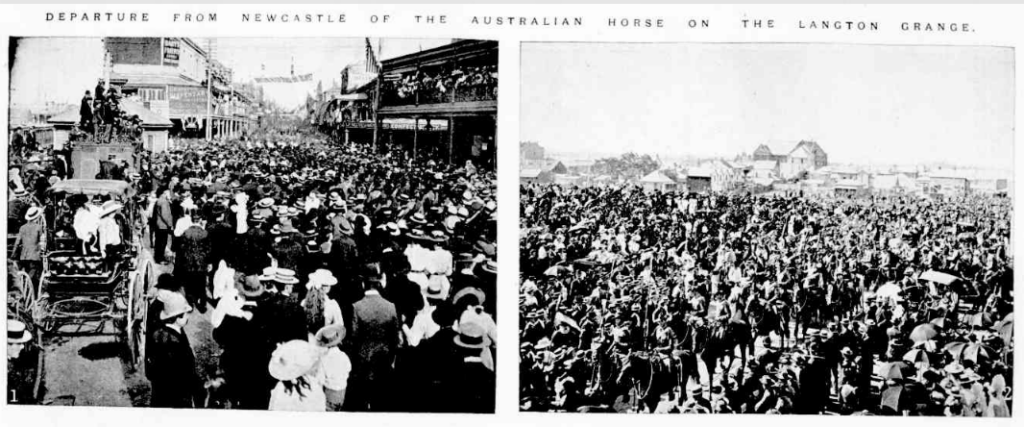
Image above: Australians and their horses leave Newcastle on the Langton Grange, a mighty horse ship which could carry up to 1,000 head. Big crowds turned out to see them off. these horses were not for sale but going with our men to the Boer War. Many horses for WW1 also left from Newcastle.
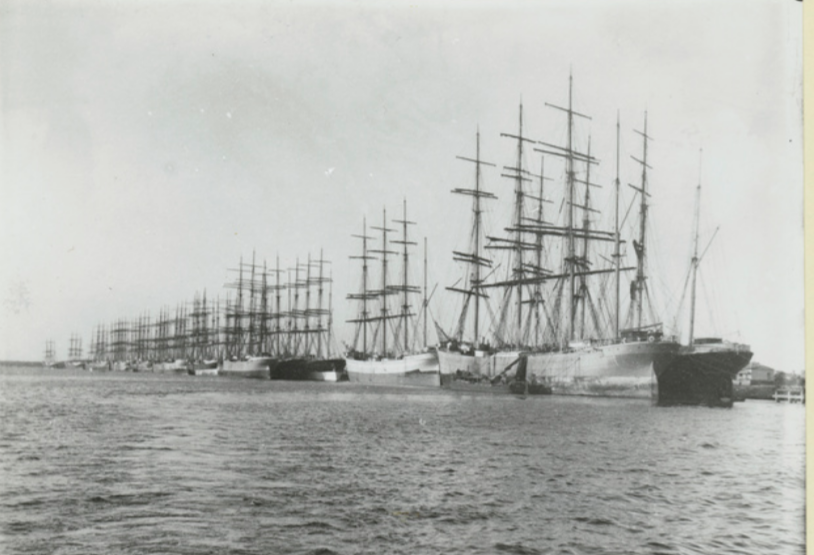
![Tall Ships, Carrington Dyke, Newcastle, NSW, [1895]](https://walerdatabase.online/wp-content/uploads/2023/04/Tall-ships-Newcastle-harbour.png)
Images: ‘View of deep sea sailing ships in Newcastle Harbour in 1906.’ A.D. Edwardes collection. State Library S.A.
‘Tall Ships, Carrington Dyke, Newcastle, NSW, [1895].’ J & A. Brown Collection. Uni of Newcastle via Flickr. Carrington Dyke was one of the wharf areas ships docked at, to discharge and take on cargo including horses. Queen’s Wharf was another that horses left from.
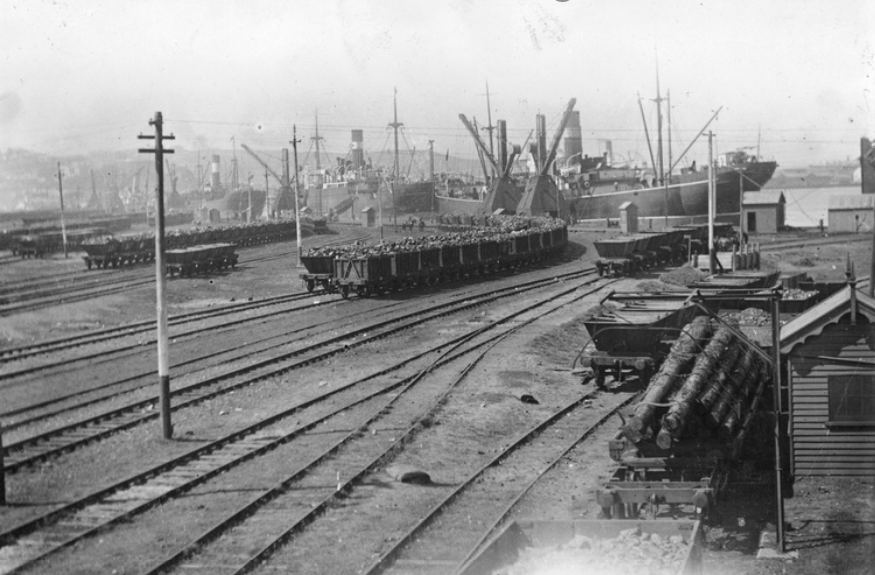
Image: ‘Cargo ships docked at a Newcastle wharf in NSW, with coal wagons ready to be unloaded onto the vessels. c. 1914.’ State Library S.A.
The rail was useful to bring trains with horses on, to the ships too. Showing what a busy port it was.
Horses arrived at Newcastle from Chile and England in the early 1800’s – the greatest number from Chile. Captain Merial Moriarty carried out a lot of the early work to set the port up properly. Soon we were breeding enough horses to start exporting. The horse trade got underway by the 1840’s from Newcastle, most early loads going to New Zealand. Of interest, the AA Co., breeders of excellent horses and Merino sheep had shares in Hunter coal, so exported coal, wool and horses from Newcastle.
It became the major NSW port for shipping horses, taking over from Sydney for biggest numbers shipped – some years over 8,000 horses left Newcastle for many countries. Good roads went in early then early rail networks – horses could be brought to Newcastle from all over NSW.
The port catered well for stock – horses could be unloaded straight from the rail cars into a portable wooden alley with high sides that led straight on board ship. Some were slung on board in boxes – at owners or shippers whim – some thought it kinder but it wasn’t, and it was certainly slower.
Ship captains and shipping agents were paid only for horses landed alive, so welfare was paramount. However those who think this trade cruel best look at something else please.
Image: Wagga Wagga Express, 11th March 1897. Melbourne had gone over to ramp rather than sling loading the year before, it didn’t take Newcastle long to take up the new system which was faster and less stressful.
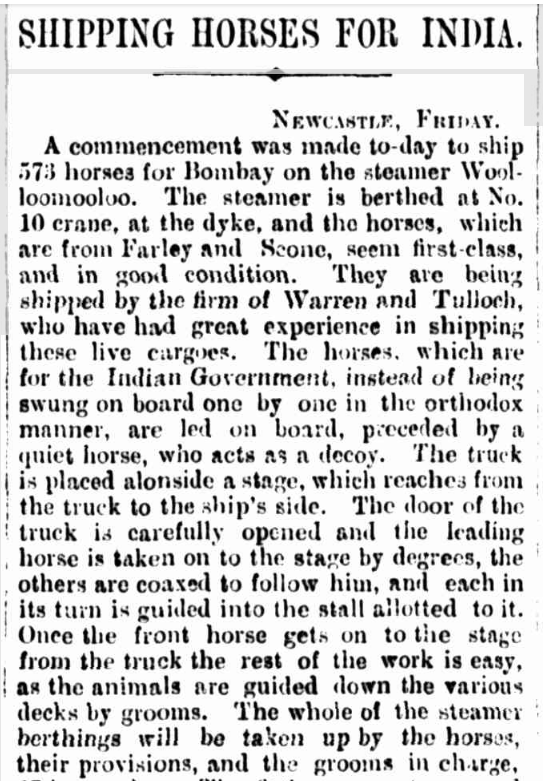
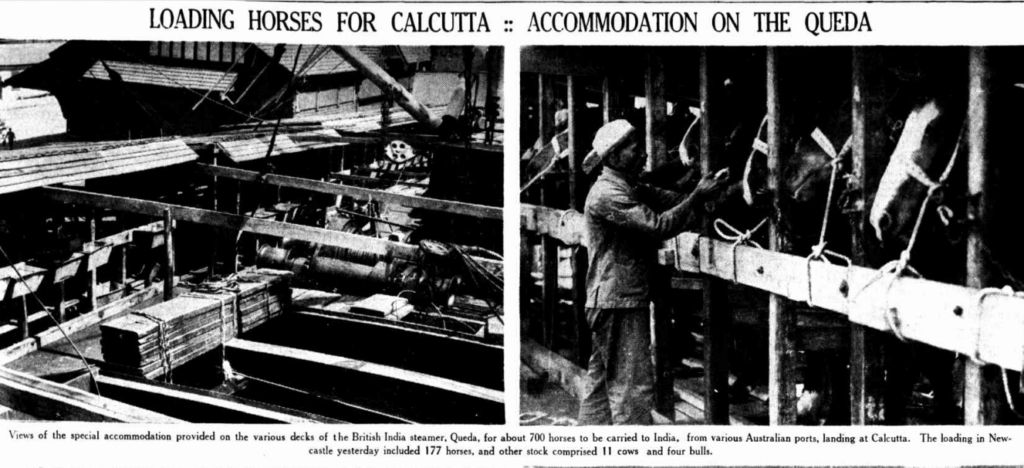
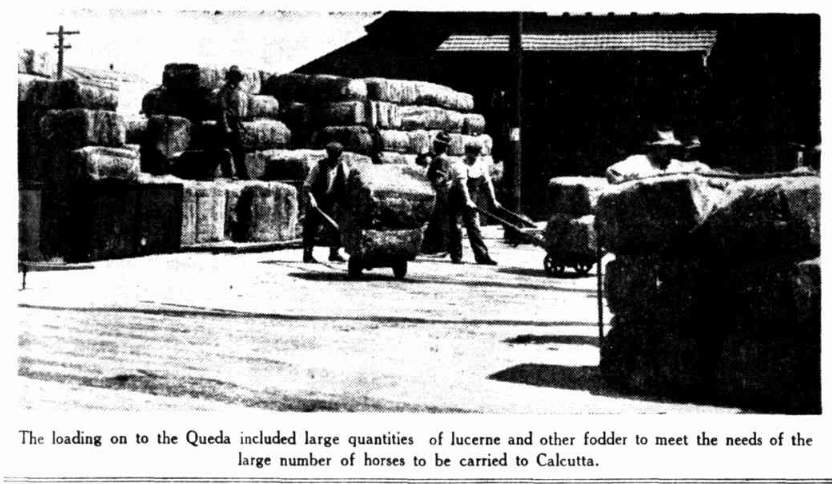
Images: Newcastle Morning Herald and Miners’ Advocate, 30th September 1936
Many of the men who travelled with export horses to care for them, did this job all their working life. Feed was kept in a separate hold, so in case of spontaneous combustion it could be shut down and deprived of oxygen to prevent fire spreading.
The horse trade is how Walers got their name, and how we came to have great horses for all sorts of purposes, in big numbers. Breeding was a livelihood for many and so was shipping.
We competed on the world stage with our horses so they had to be good. Australia became the biggest horse exporter of all – greater than Canada and the USA.
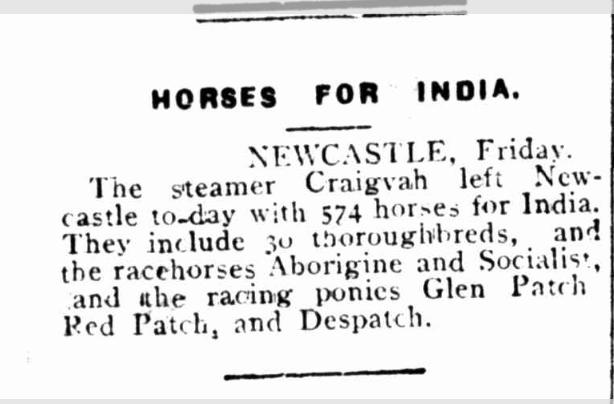
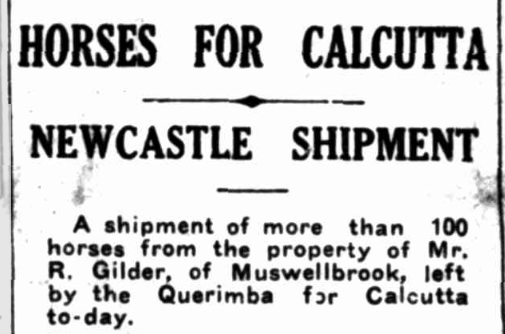
Just some examples; almost every day ships left with horses.
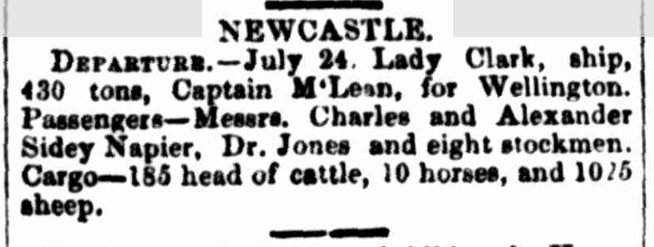
Image: Sydney Morning Herald, 25th July, 1850
A “ship” meant a sailing ship of a certain rig, not a steamer. Many skilled Captains traded to and from Newcastle not just for coastal trade but overseas. New Zealand got thousands of horses from us in early times, many from Newcastle.
Needless to say Newcastle port used working horses, primarily for loading coal. In 1914 a big change came about when they went over to hydraulics and motors; no more work horses.
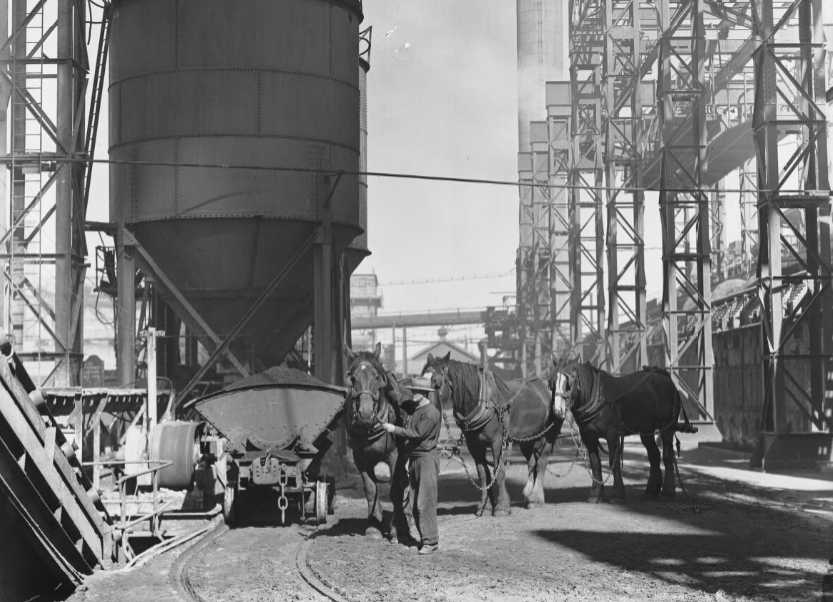
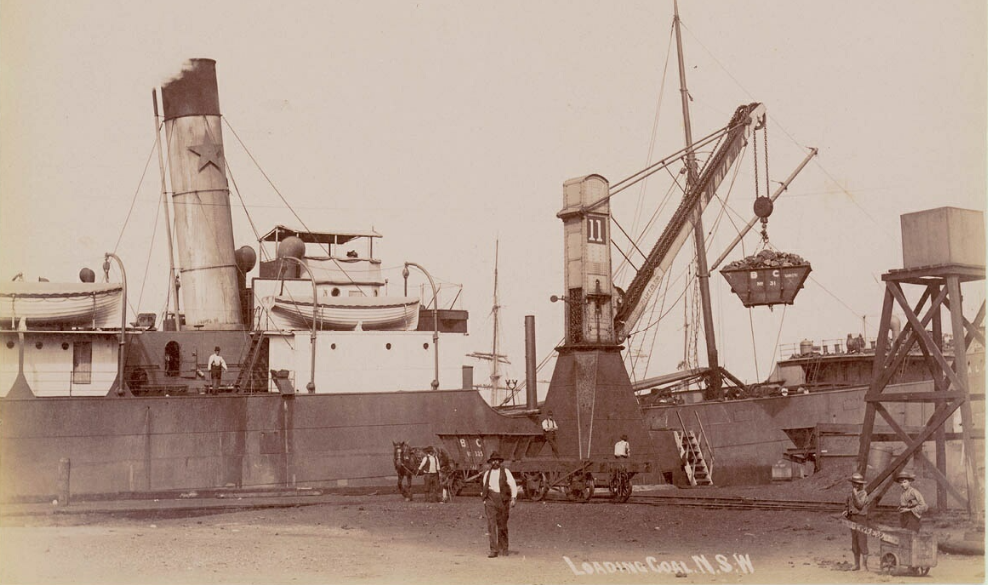
Images: ‘BHP Steelworks, Newcastle, heavy horses used for moving the ore.’ Frank Hurley photo, National Library of Australia.
‘Loading coal, Newcastle.’ State Library NSW. Until 1914 when machinery took over horses did the work on the wharves hauling coal.
A few news clippings to tell the story – apologies as no good photos of horses being loaded at Newcastle – despite a very conservative figure of half a million horses being shipped for our overseas trade from this port alone, over a century.
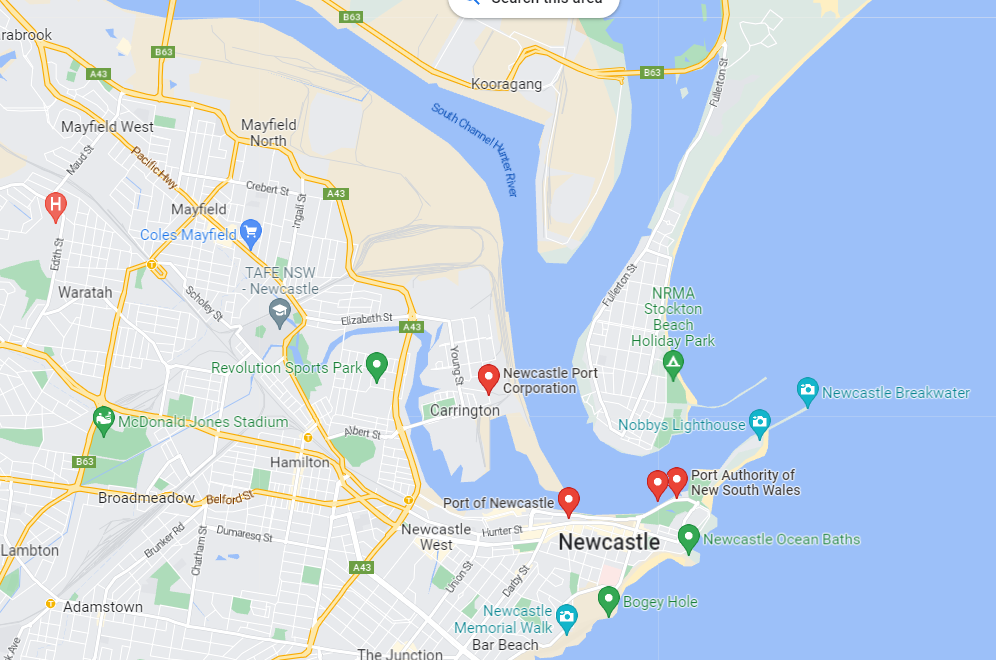
One can see that the port is at the mouth of the Hunter River, useful for river craft to also bring cargo to and fro. A very busy fleet of river steamers plied their trade in the horse days. Dredging started in 1845 to keep some areas clear.
Many ships trading there early on were sail ships (and yes they took on coal as cargo sometimes) – one can see the harbour entrance could be tricky in bad weather.
Newcastle Harbour, lovely and deep, is now the busiest sea port on Australia’s east coast.